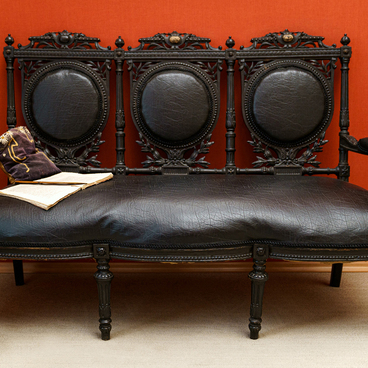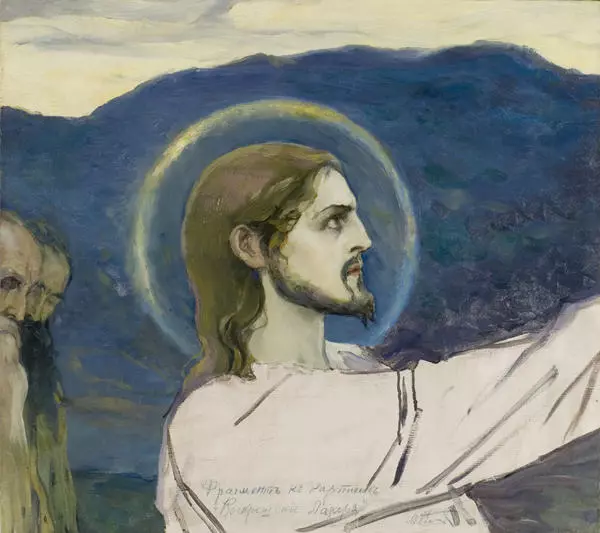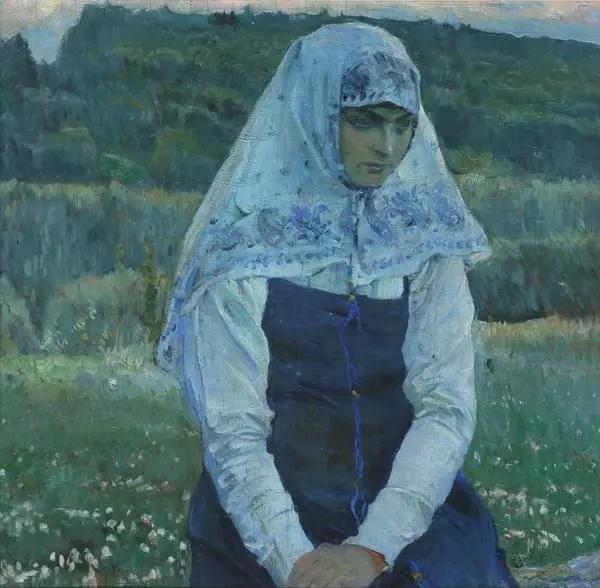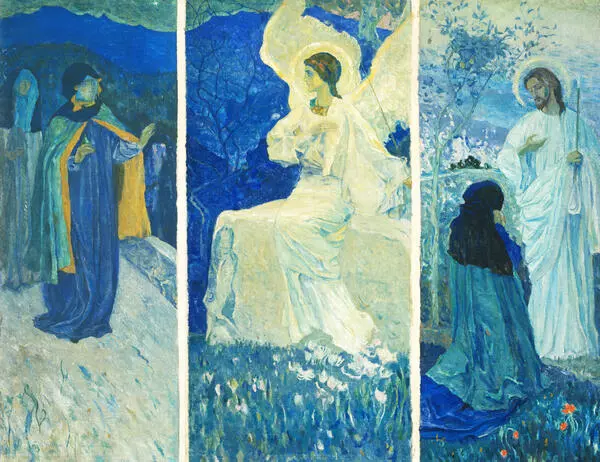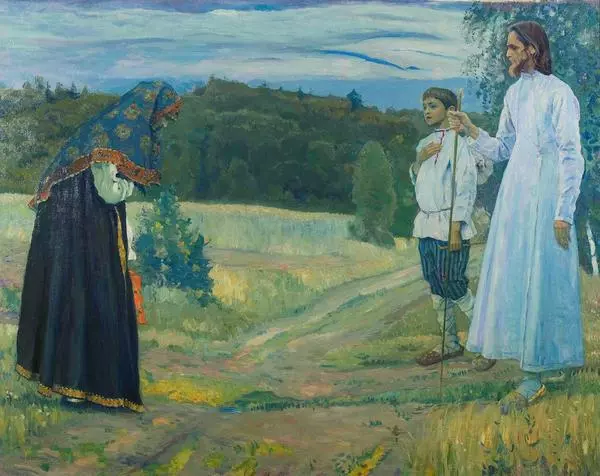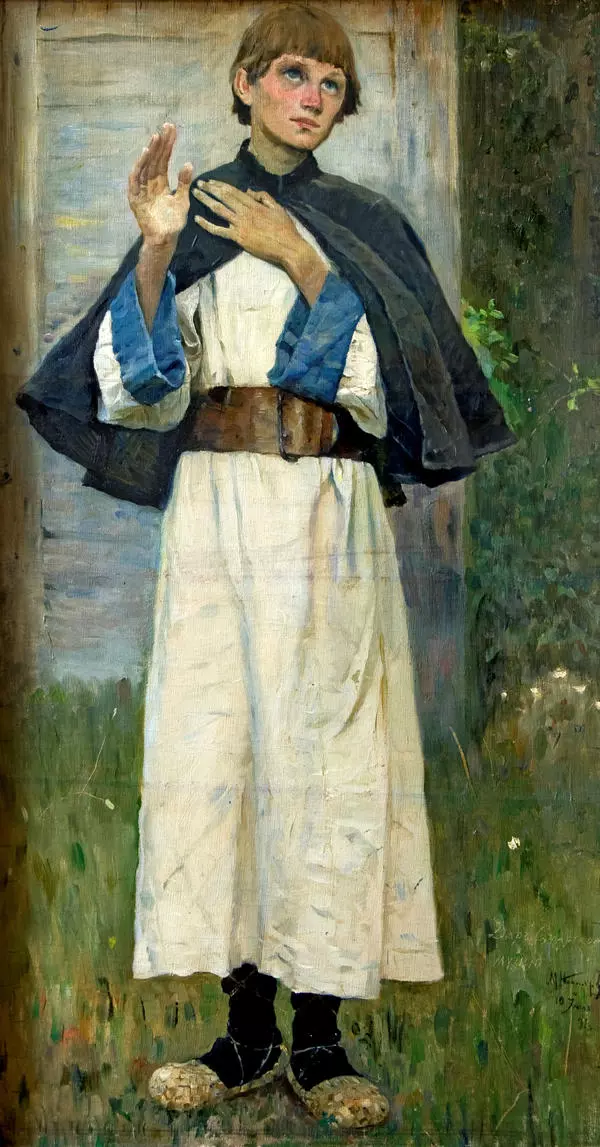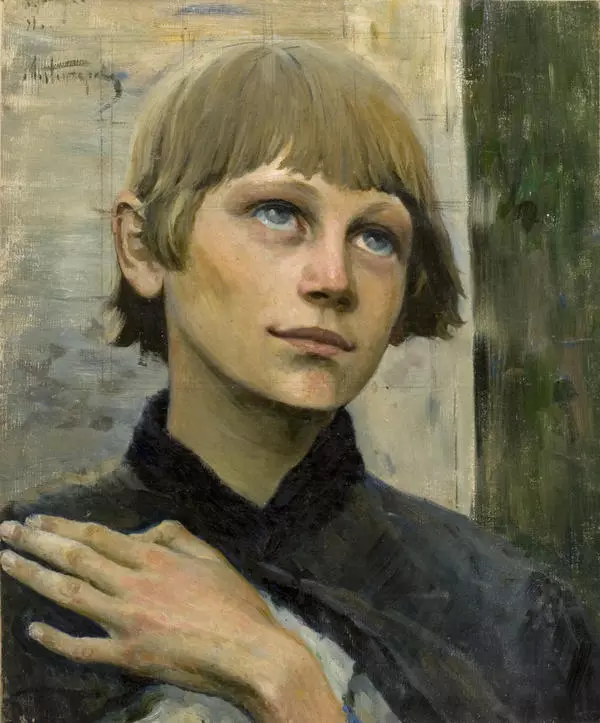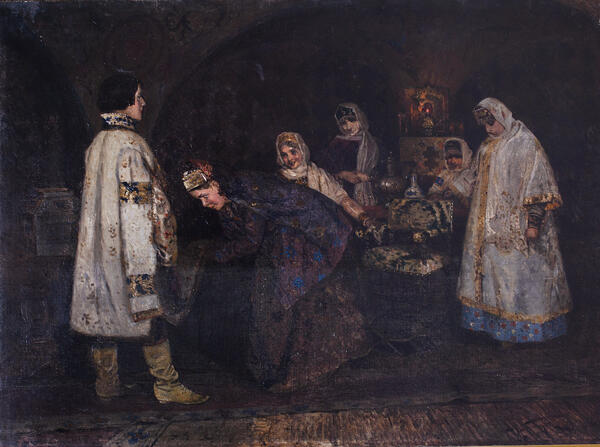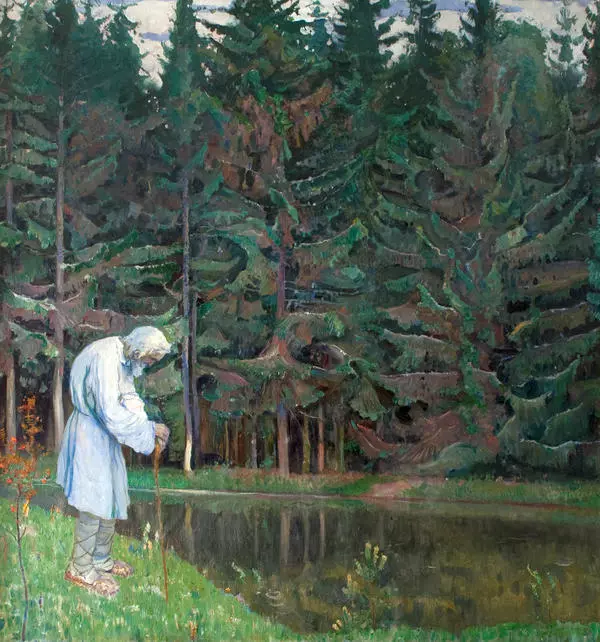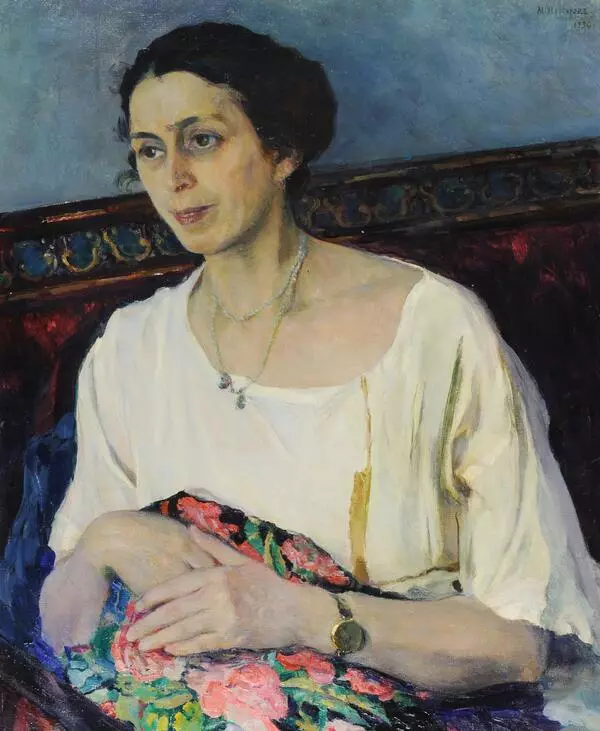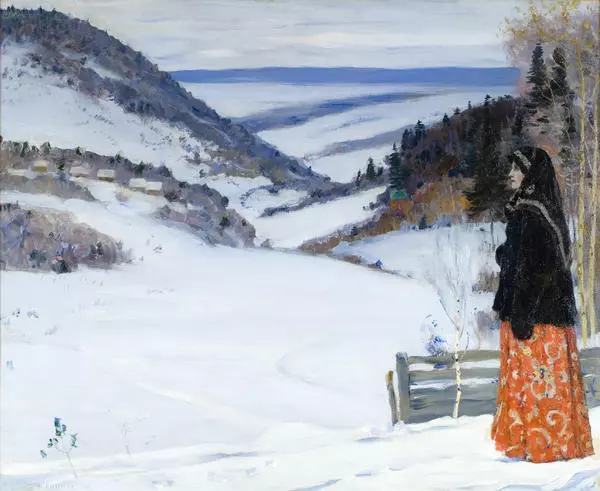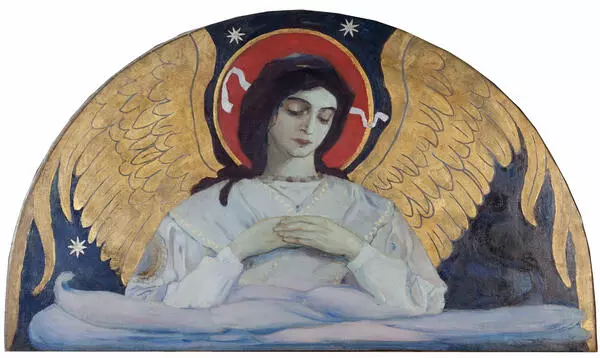Mikhail Vasilyevich Nesterov was born on May 19, 1862 in Ufa to a merchant family. The artist writes in the book “The Olden Days” as follows,
1 / 2
Virgin and Child
Время создания
1907
Место создания
the Russian Empire
Размер
36,6x33,2 cm
Техника
wood, oil
Коллекция
1
Открыть в приложении#2
#4
I was named Mikhail in honor of Mikhail Mikhailovich Rostovtsev, my grandfather. I was the tenth child. There were two more after me, but except for my sister and me, all the babies died in early childhood. Our family was an ancient merchant family: the Nesterovs came from the north, from Novgorod, the Rostovtsevs from the south, from Yelets.
#5
Nesterov was a prominent representative of the “church Renaissance” art movement, popular at the turn of the 20th century. His icons and frescoes on canonical topics were characterized by a profound lyrical quality. One such example is the small painting “Virgin and Child” on display in the Rybinsk Museum. The Virgin Mary is depicted in a half-turn, with Her distinctive silhouette standing out against the golden background. The Christ Child is nestled against Her cheek, gazing at the viewer directly with a serious expression on His face. The depiction of the Virgin echoes the composition of icons that belong to the Eleusa, or Tenderness, iconographic type.
Although this is an oil-on-canvas painting, its base is a wooden board with two mortice dowels, which were used to provide structural support and prevent deformation. Icons were traditionally painted on such wooden boards.
The elements of traditional Orthodox iconography are organically integrated with the characteristic features of the Art Nouveau style, within which the artist worked in the early 20th century. This explains the prevailing mood of refined exaltation in the painting, as well as the exquisite curved lines and the wreath of pink and yellow flowers along the top edge.
The date noted by the artist on the reverse, 1907, helps to reconstruct the circumstances of the creation of the work. It is likely that Nesterov referred to this very painting in a letter he sent from Abramtsevo in September 1907 to his friend, Alexander Turygin, stating, “Upon my arrival, I will complete the portrait of Tolstoy and begin work on an image for the city of Perm, as well as a ‘Mother of God’ for Countess Fersen.” Sofia Alexandrovna Fersen was the wife of General Nikolai Pavlovich Fersen and a member of the entourage of Emperor Nicholas II.
In the same year, 1907, the artwork was published under Nesterov’s name in the literary and art magazine “Golden Fleece”. A similar artwork from 1906 can be found in the Yerevan Museum of Russian Art, titled “Our Lady of Tenderness”.
#3
Ministry of Culture of the Russian Federation
читать дальшескрыть
00:00
00:00
1x
Virgin and Child
Время создания
1907
Место создания
the Russian Empire
Размер
36,6x33,2 cm
Техника
wood, oil
Коллекция
1
Открыть в приложении
Поделиться

